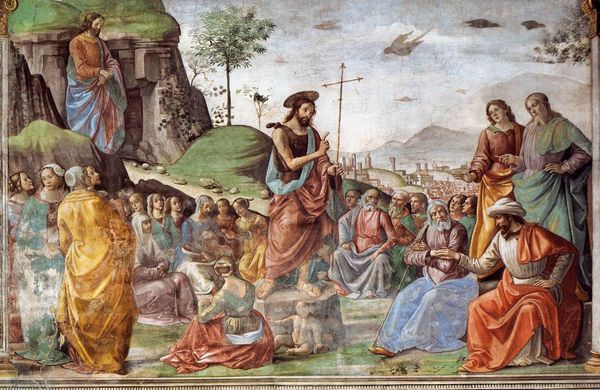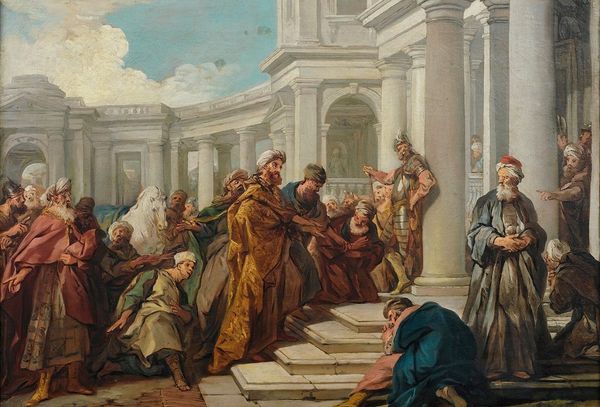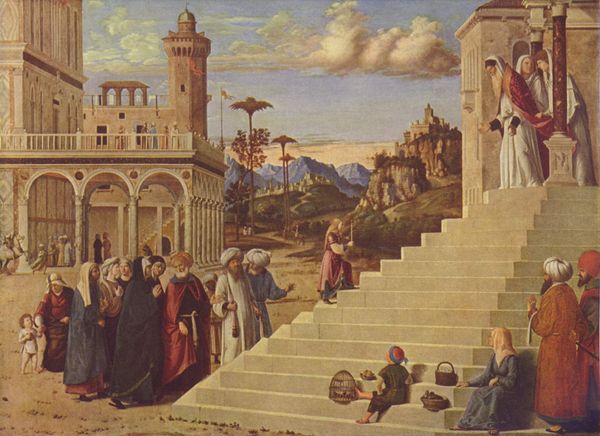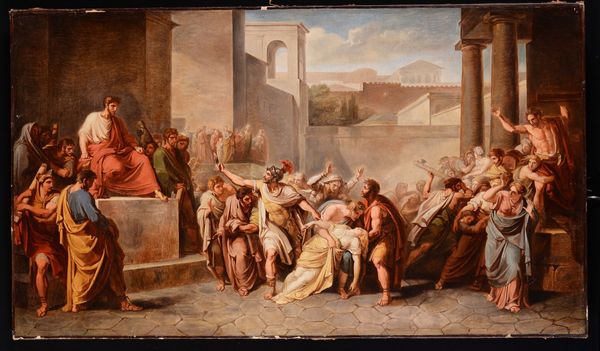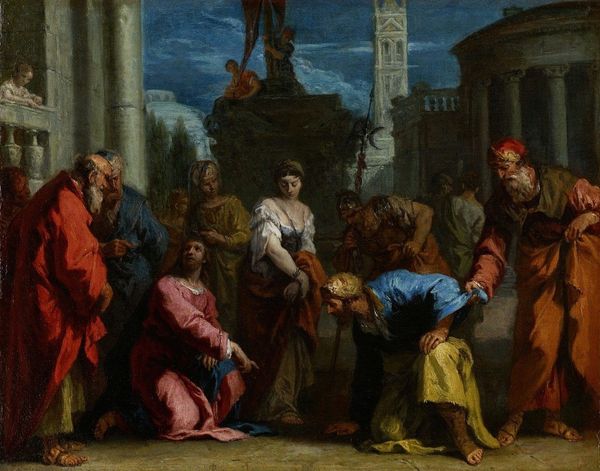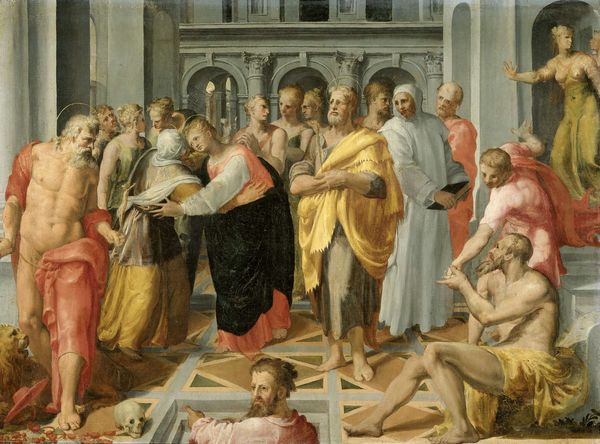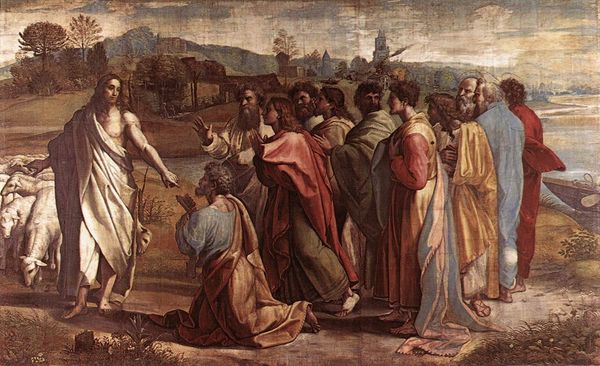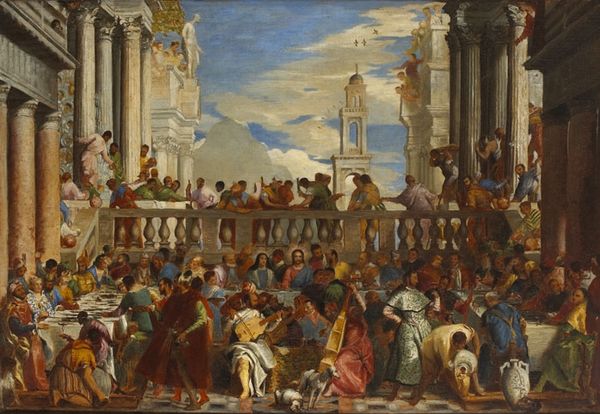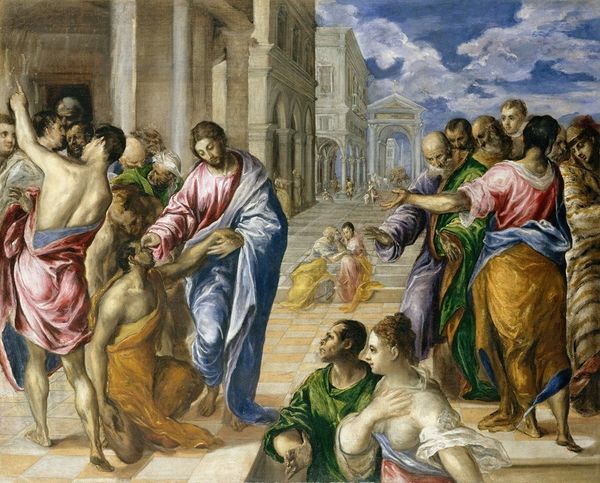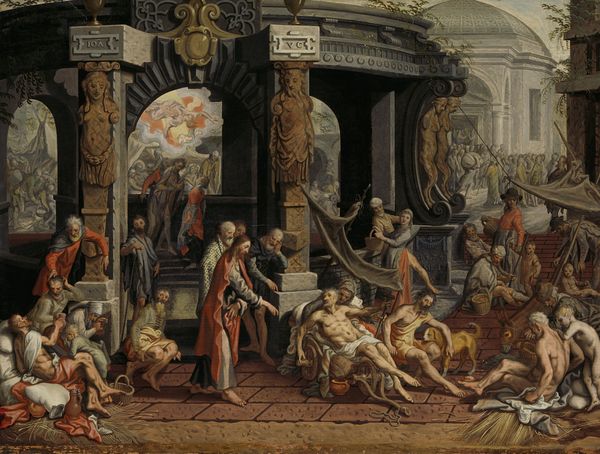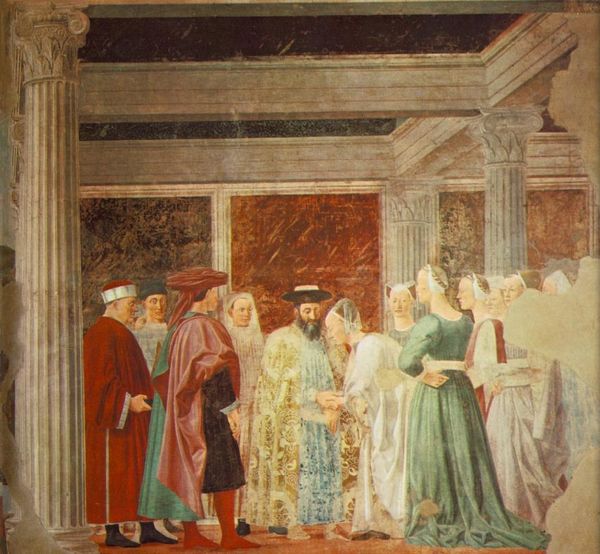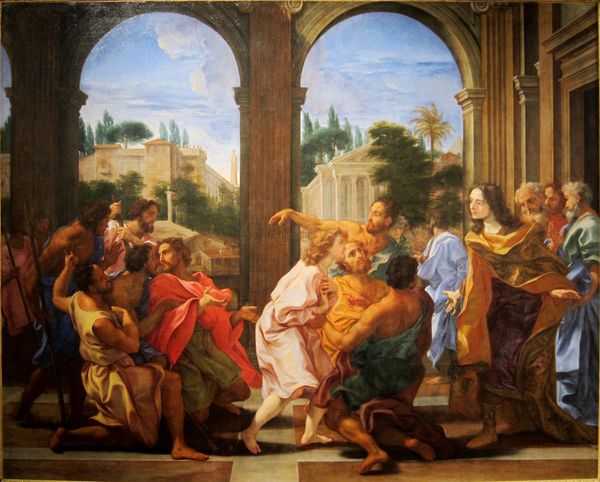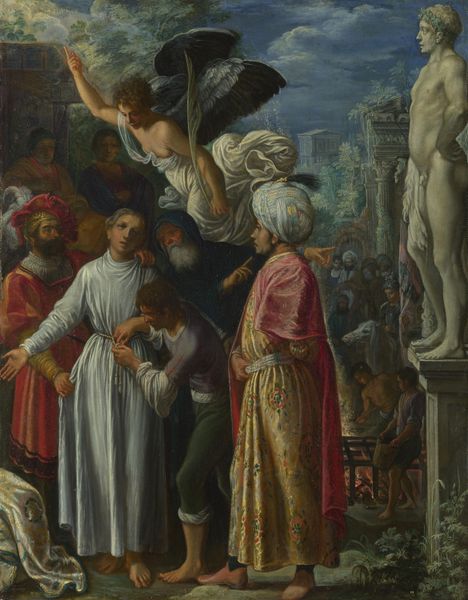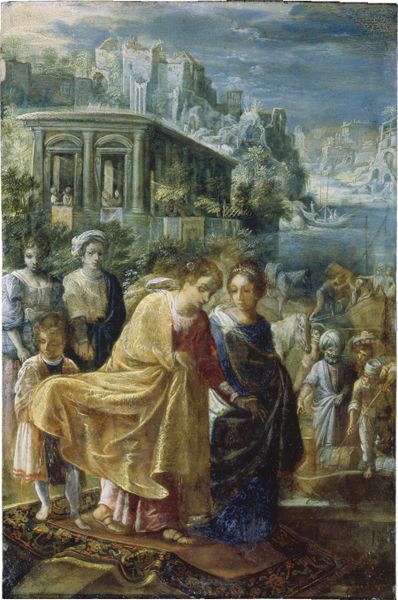
painting, oil-paint
#
venetian-painting
#
painting
#
oil-paint
#
mannerism
#
figuration
#
oil painting
#
history-painting
Dimensions: height 160 cm, width 225 cm, depth 7.5 cm
Copyright: Rijks Museum: Open Domain
Editor: This is Jacopo Tintoretto’s oil painting, “Christ with the Adulterous Woman,” created sometime between 1550 and 1580. I’m immediately struck by the asymmetry and the almost chaotic energy of the scene. How do you interpret this work? Curator: The dynamism is intentional, part of the Mannerist style, absolutely. But let’s consider the subject itself. It's not just a biblical scene, it's a confrontation with power, particularly male authority. Think about the power dynamics inherent in accusations of adultery, especially against women. Tintoretto places Christ not just as a religious figure, but as a disruptor of social order, challenging hypocritical judgment. Where does the act of forgiveness stand when society uses laws to control and subjugate marginalized communities? Editor: So, you're saying it's not just a story about forgiveness, but a critique of social control? I hadn’t considered the power dynamics so explicitly. Curator: Exactly. Notice the architecture, almost oppressive in its scale and classical references. How does that relate to the power of religious institutions? Think about how legal and religious institutions historically have disproportionately affected women, people of color, the poor… Editor: That connection between the architecture and institutional power...it's a powerful point. It makes the woman's vulnerability, and Christ’s defiance, all the more poignant. Curator: It is crucial to always consider historical background when examining power structures present in artwork and what role the artwork fulfills. This brings up the broader point of gender dynamics of that time. Is it possible for Tintoretto to separate his interpretation of Christ from the misogynistic elements of his own context? How would the artist represent the biblical scene in today’s world? Editor: It’s amazing how much more there is to unpack when we view the work this way! Curator: Indeed, it's a starting point for understanding how art engages with the continuous re-evaluation of culture.
Comments
No comments
Be the first to comment and join the conversation on the ultimate creative platform.
